Florida’s abundant sunshine offers an ideal environment for a myriad of plants that thrive in full sun conditions. From vibrant blooms to lush foliage, these Florida full sun plants adorn gardens with their beauty and resilience. Whether you’re seeking colorful flowers or verdant greenery, these sun-loving varieties promise to brighten any landscape with their vitality and charm.
Different Types of Florida Full Sun Plants
Evolvulus
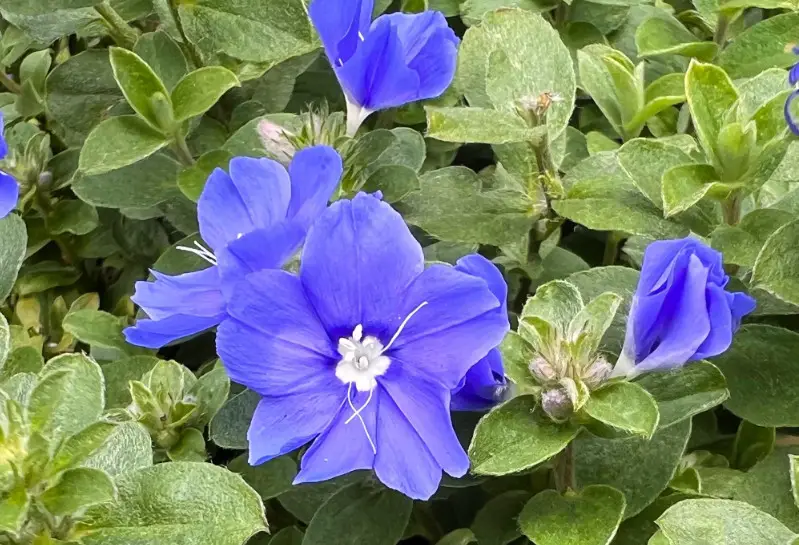
Evolvulus pilosus, also known as just Evolvulus, is a low-maintenance plant that doesn’t require trimming or the removal of dried leaves because it self-cleans. It thrives in warmth and sunlight, needs just minimal watering, and is drought-tolerant. It works well as ground cover in both containers and garden beds because to its quick spreading habit. Six to eight hours of direct sunlight each day are ideal.
Bougainvillea
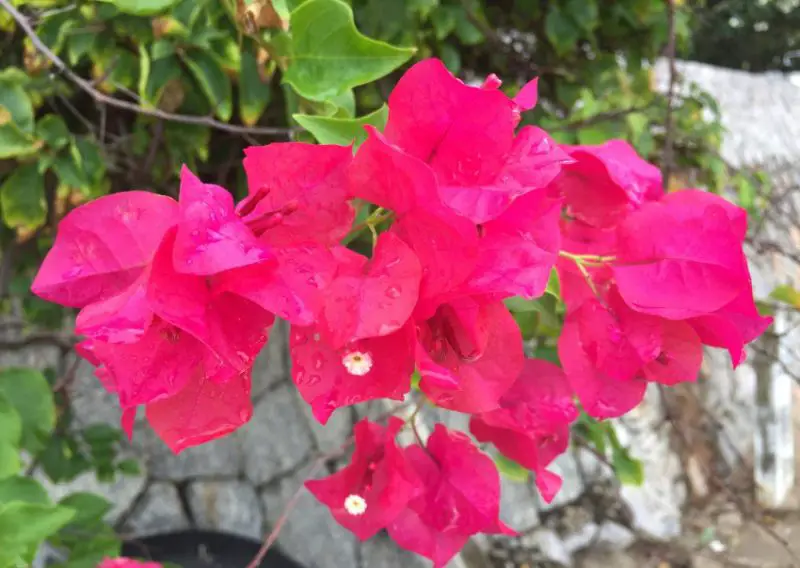
Bougainvillea, a striking landscaping plant, showcases its vibrant pink blooms in full sun; any less than five hours of sunlight could make them less spectacular. Although it is hardy in the South, during its delicate growing phases it needs shelter from frost and severe temperatures. The ideal range of temperatures is between 70 and 85 degrees Fahrenheit, with a temperature above 60 at night. Fertilizer rich in phosphorus and enhanced with iron and manganese is beneficial for the best growth of bougainvillea. Pruning keeps its formal appearance intact.
Purslane
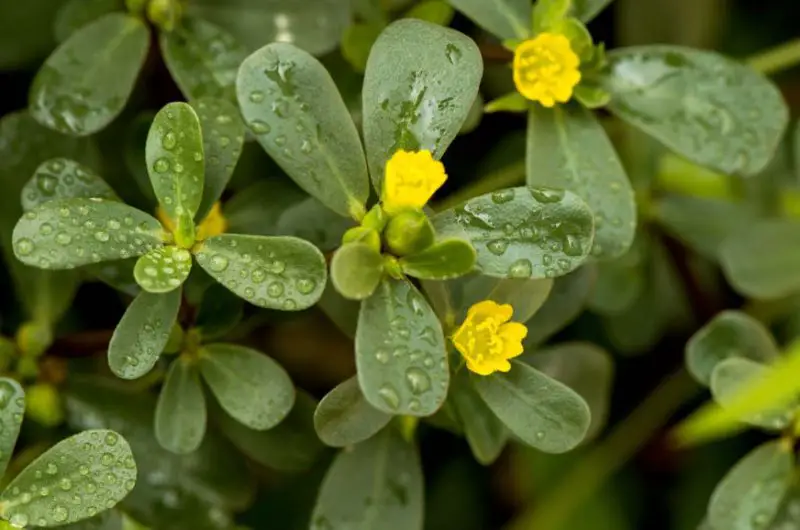
Purslane, or Portulaca oleracea, is an interesting and tasty plant that is high in Omega-3 fatty acids. It has been used as food and medicine for almost 4,000 years, and it’s also beautiful. Purslane grows well in flower beds, borders, and along roadsides; it thrives in sunny spots. Tiny yellow blooms adorn its rosette-shaped foliage, lending appeal to any area.
Bottlebrush
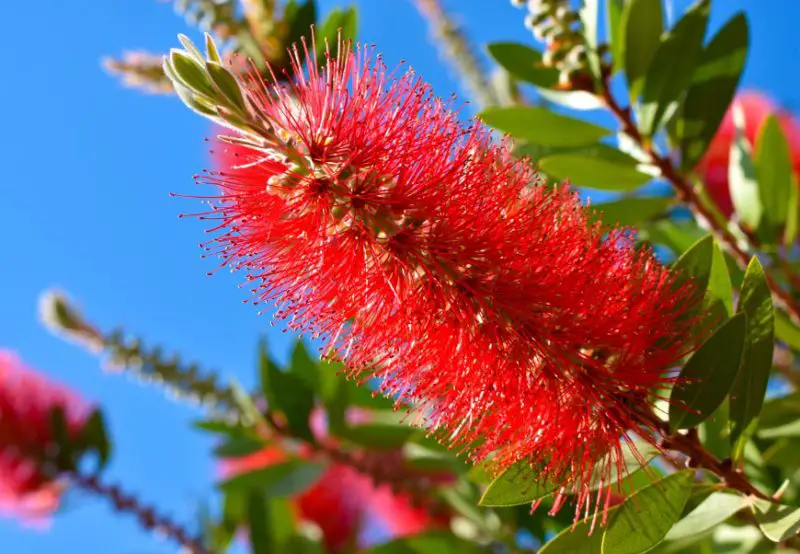
Callistemon, commonly known as the Bottlebrush plant, thrives in six to eight hours of bright sunlight, essential for its vibrant flower production. Lack of sunlight often hinders blooming. Additionally, it requires shelter from cold and harsh winds. Pairing Bottlebrush with Salvia or Lavender creates a striking tropical landscape bursting with color and vibrancy.
Canna
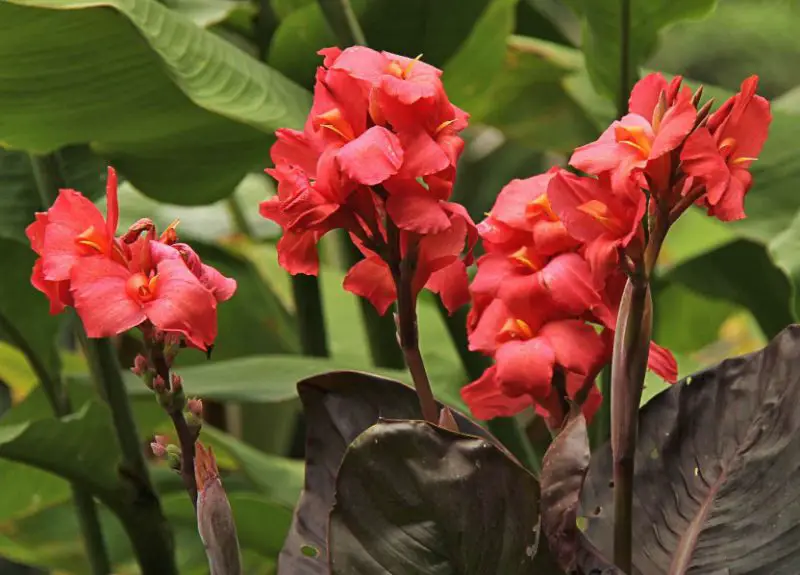
Canna is a plant that grows best in full light and regular irrigation, depending on the temperature. To give yourself plenty of area for growth, sow rhizomes horizontally in holes that are two inches deep and at least one foot apart. Cannas offer a spectrum of magnificent hues for any landscape, with various cultivars featuring flowers in brilliant shades of orange, pink, yellow, purple, and red.
Egyptian Star Cluster

Pentas lanceolata, also known as Egyptian Star Cluster, showcases striking red, purple, or pink star-shaped flowers with white centers, blooming erectly from spring to fall. Standing at a maximum height of two feet, it’s ideal for flower beds, borders, and containers. Egyptian Star Cluster attracts birds and butterflies, serving as natural pest and insect control in gardens.
Blanket Flower
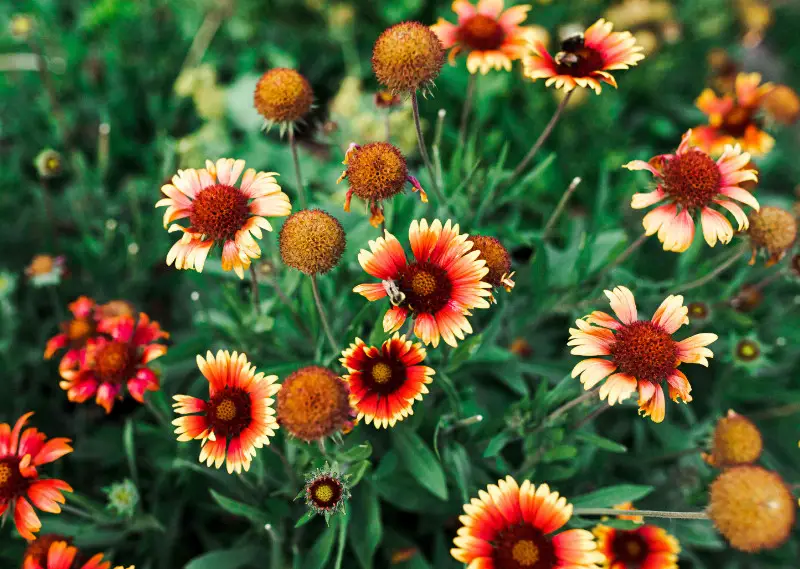
Blanket flower, or gaillardia, is a native of Mexico and the United States that has vivid red, daisy-like blossoms. Its yellow-tipped, thin petals make a dramatic contrast. Blanket Flowers, which come in a variety of varieties with varying degrees of cold tolerance, grow best in hot, dry regions with full sun and little watering.
Bog Sage
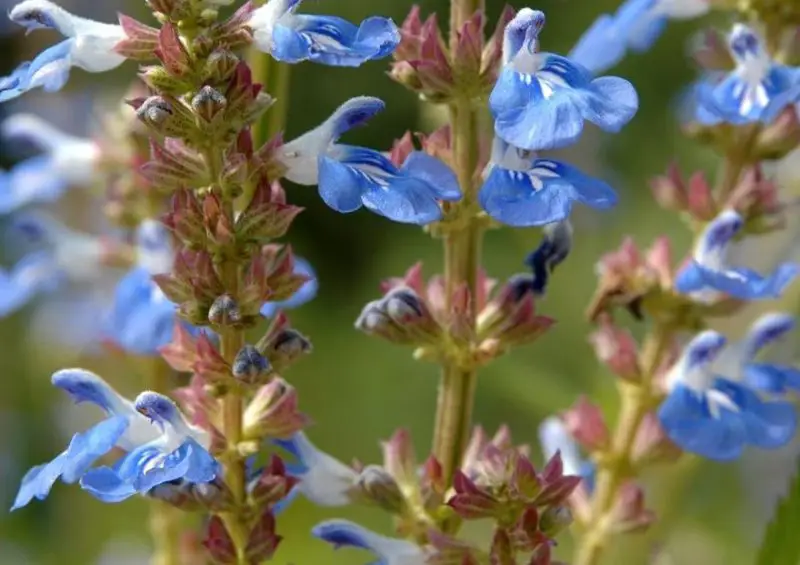
Bog Sage, or Salvia uliginosa, is a plant that produces beautiful clear-blue flowers on graceful stems that work well in both fresh and dried arrangements. Beyond only being beautiful, it also attracts birds, butterflies, and bees, and it helps manage insects and pollinate gardens. Bog Sage has won prizes from the Royal Horticultural Society for its beauty and little maintenance. It gives gardens a unique character and is native to Argentina and Brazil.
Lantana

Lantana bursts with vibrant, multi-colored flower clusters, blooming almost year-round. Thriving as an evergreen shrub in warm climates or as ground cover, it reaches up to six feet in height and spreads up to ten feet with sufficient sunlight. In colder regions, it grows as an annual, reaching smaller sizes. Alongside its stunning flowers, Lantana boasts textured foliage with a sage-like scent, contributing to its ornamental appeal.
Dutchman’s Pipe
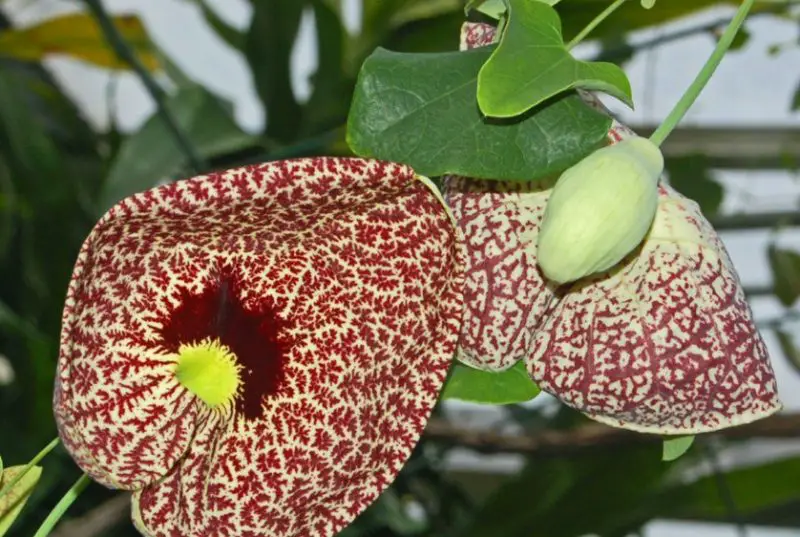
Aristolochia is most commonly referred to as Pipe Vine or Dutchman’s Pipe. If you are in one of the eight to ten USDA hardiness zones, you can grow this uncommon plant outdoors. The plant typically reaches a height of 10 feet, but under ideal circumstances, it can reach a few feet higher.
It is a vine, thus in order for it to reach its maximum growth potential, you will need to give it a supporting structure. Dutchman’s Pipe produces beautiful, distinctive flowers in the early summer.
Coreopsis
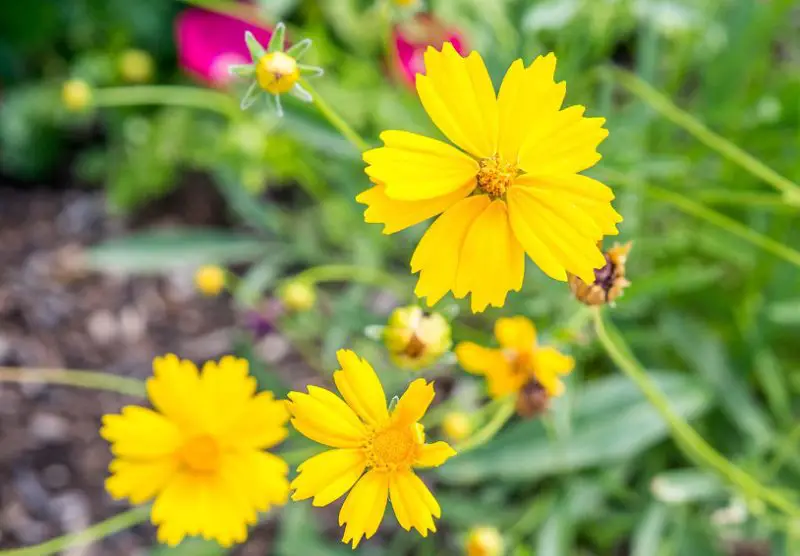
Coreopsis thrives in sunny Florida gardens, requiring ample light and warmth to flourish. Among the simplest plants to cultivate, it demands little attention once established. Sow its seeds in spring, ensuring moisture for 21 days to aid germination. Maintenance involves merely deadheading spent flowers to promote continual blooming and fresh growth, making it an ideal choice for hassle-free gardening in the Sunshine State.
Crown of Thorns
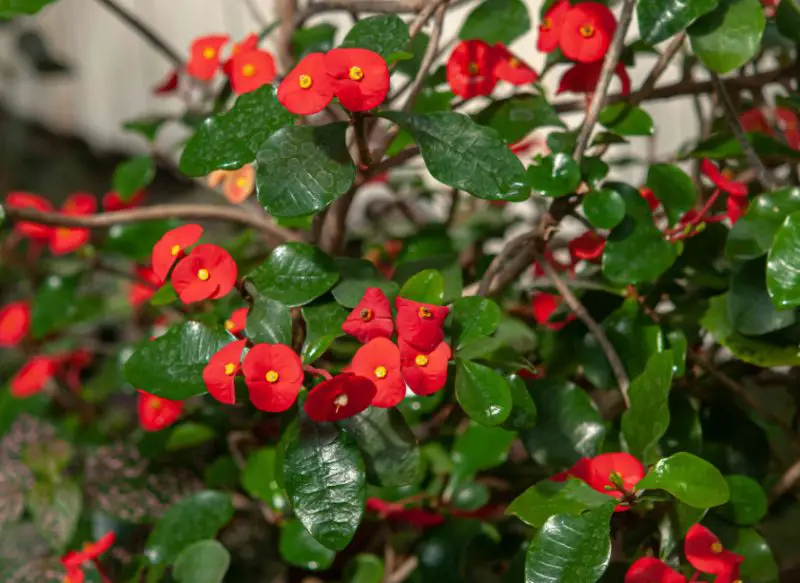
Euphorbia milii, the scientific name for Crown of Thorns, is a tropical plant that grows native to Madagascar. It is a simple cultivator that needs little watering during its winter hibernation to prevent fungal illnesses and root rot, and it needs liquid fertilizer in the spring, summer, and fall. It thrives in full sun and temperatures between 65 and 75 degrees Fahrenheit and is neglect-tolerant.
Gerbera
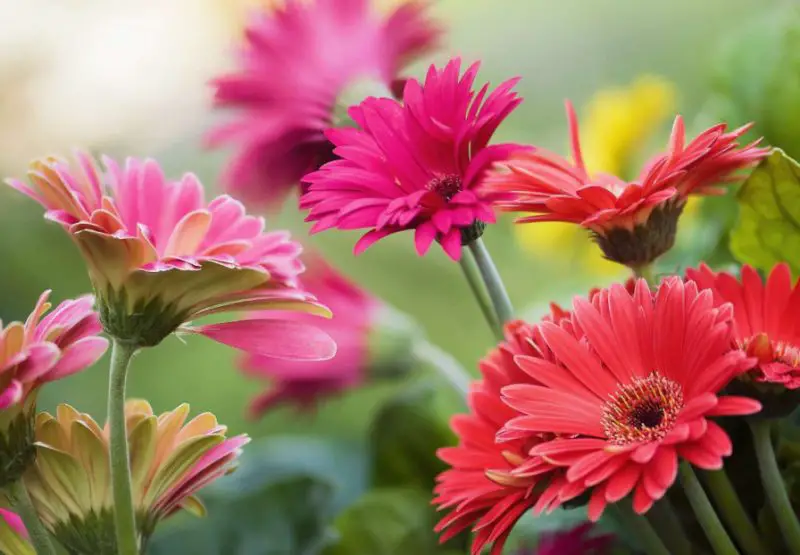
Loved for its vivid blooms, gerbera is a simple addition to any garden since it grows well in full light and mild temperatures. Controlling moisture can be achieved by mulching the plant and letting it dry out a little between waterings. When Gerbera plants are regularly fertilized with a controlled-release fertilizer high in iron and manganese, it promotes healthy development and addresses frequent micronutrient shortages.
African Iris

Dietes iridioides, or African iris, is a plant that grows best in sunny settings and has beautiful yellow-white blooms. It needs six to eight hours of sunlight every day. Rich in organic matter and well-draining soil are ideal growing conditions. Plants should be spaced at least 30 inches apart to allow for proper air circulation and the prevention of fungal infections. Sustain a reasonable level of soil moisture, adding about one inch of water each week when the weather is dry.
Salvia
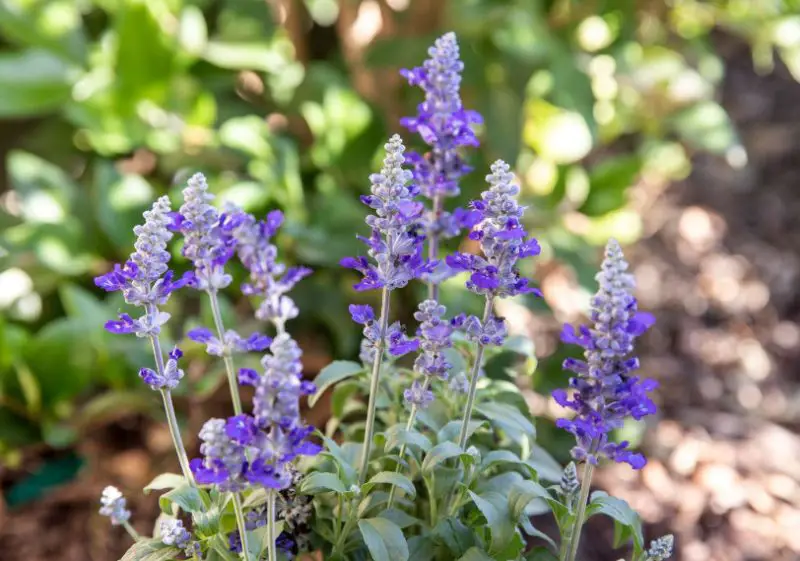
Salvia, or Salvia nemorosa, grows best in direct sunlight but may also withstand some shade. Beautiful flowers are produced in response to an abundance of sunshine. Salvia is a simple plant to grow and doesn’t require special soil conditions or a lot of watering. Growth is enhanced by the occasional spring fertilizing with fish, blood, and bone fertilizer. In severe weather, mulching helps keep roots healthy, especially in low-quality soil.
Agave
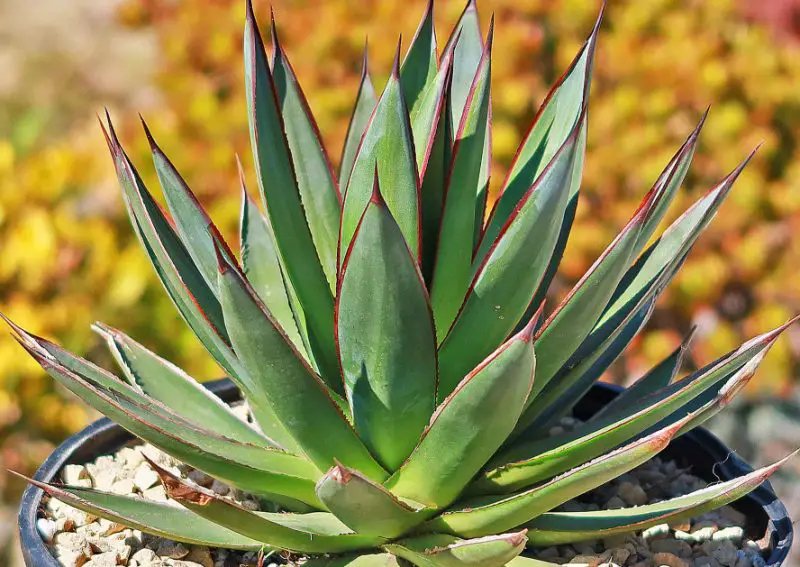
The iconic tropical plant agave, with its spear-like leaf, provides a distinctive charm to landscapes and grows best in lots of sunlight. Although it may grow in a variety of soil conditions, it prefers rocky, sandy places. Older plants don’t need much watering, especially in dry spells, but recently planted plants do better with regular wetness at first, then less as they get established.
Mexican Petunia
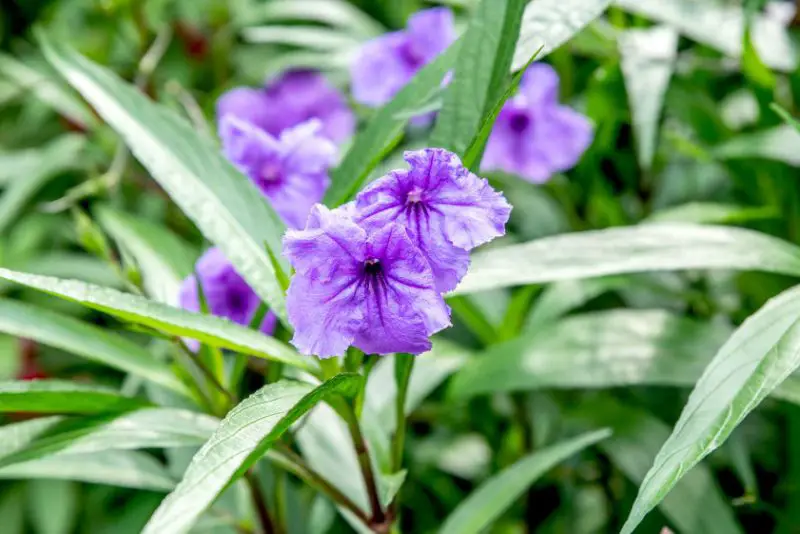
The Mexican petunia, officially known as Ruellia brittoniana, is a plant that grows best in full sun but may tolerate little shade at the expense of blooming. It has eye-catching purple blossoms. As a hardy perennial, given the right circumstances, it can spread. Its growth is supported by rich, continuously moist soil, especially in the summer. Dwarf kinds are also available; these are perfect for garden borders, with an average height of three feet.
Golden Dewdrop
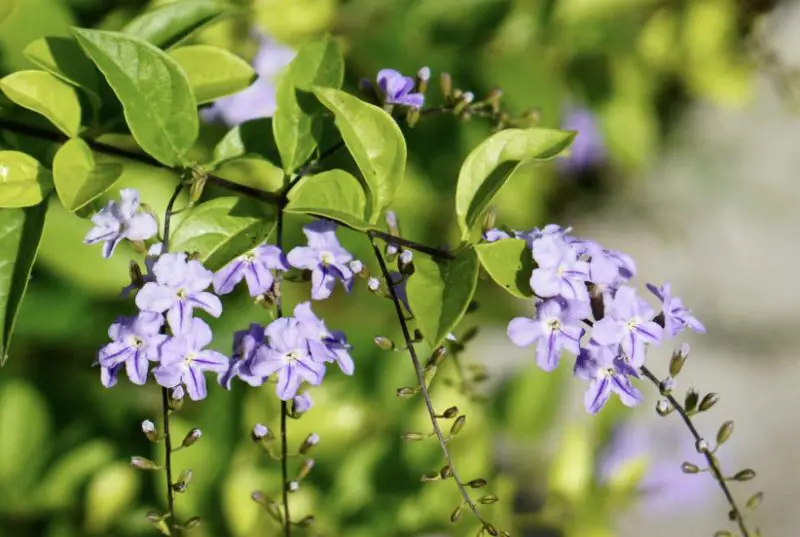
Duranta erecta, or golden dewdrop in technical parlance, is a pretty evergreen shrub with clusters of violet flowers against rich green leaves and thorns. It spreads six to ten feet in diameter and grows quickly, reaching heights of ten to twenty feet in full sun and rich, well-draining soil. It’s perfect for hedges, Mediterranean gardens, and container growing because it requires little care and is resistant to pests and diseases.
African Bush Daisy

Euryops pectinatus, often known as African Bush Daisy, is a fast-growing shrub with bright yellow flowers that resemble daisies on slender, long stalks. It blooms from the beginning of summer to the end of fall, and it can withstand a wide range of temperatures. However, in regions with lower temperatures, it needs to be protected from the winter.
Areca Palm
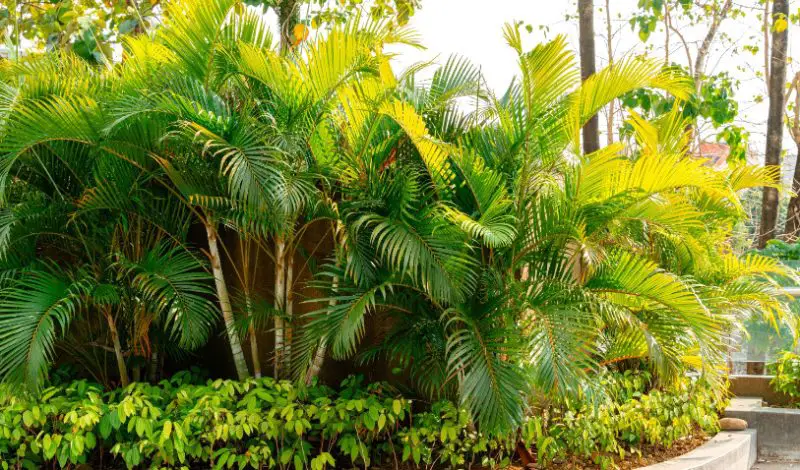
The Areca palm (Dypsis lutescens), a landscaping choice for full-sun locations, is prized for its beauty and little maintenance, making it a popular sight in Florida. Its foliage, which thrives in both full sun and partial shade, takes on a golden tint in the sunny parts and contrasts sharply with the lush green leaves in the shaded areas. Make sure the soil drains well; if needed, add sand to improve drainage.






